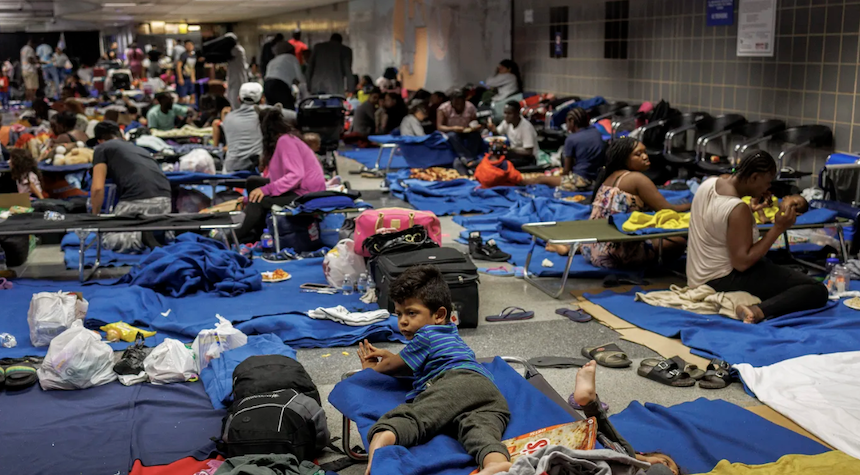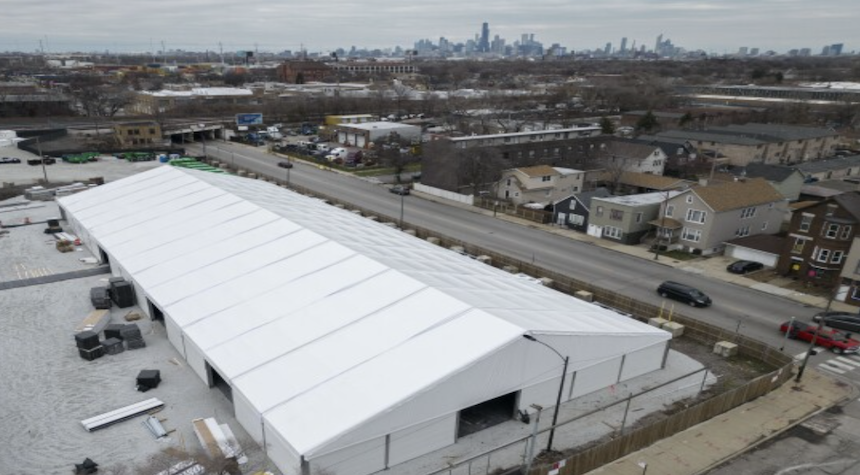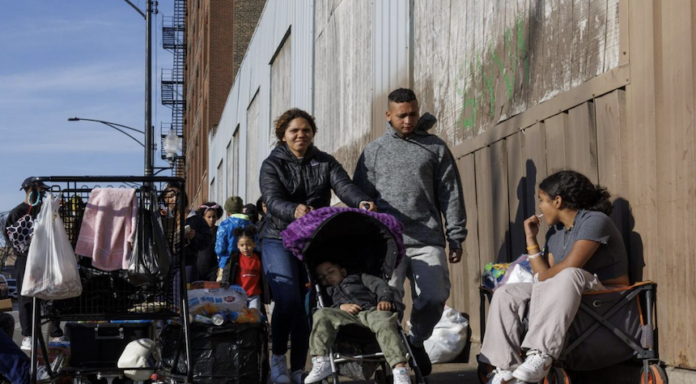Chicago is overhauling its migrant response strategies, including closing its “landing zones” and migrant-only shelters. This comes in response to a drop in the number of people who have arrived in the city over the past few months.
Chicago, New York, and Denver have all had to adjust in the last two years, as their migrant population has grown significantly after Texas Gov. Greg Abbott began busing thousands to Democratic cities by 2022. Cities have created offices, opened shelters, and allocated millions to deal with the influx of new residents. Chicago has welcomed more than 50,000 migrants. Many of these are families.
The number of migrants who have arrived in the city in recent months has dramatically decreased as a result of the Biden administration’s asylum restrictions.
In a Monday statement, Mayor Brandon Johnson stated that “this transition is by the sharp decrease in migration to Chicago as well as our current budget reality.” We will continue to work hard with our community partners and agencies as we did from the start, to bring about the next phase.
Nearly 5,000 migrants are still housed in the city’s migrant shelters.
This is a dramatic drop from the 15,000-strong peak in spring when the city was forced to evict more than 2,700 migrants from its shelters. The goal was to save resources and create room for newcomers. The majority of these migrants ended up returning to the migrant housing system.

Johnson stated that Chicago will transition from operating a separate shelter system for migrants this week to “a unified system of sheltering to serve all Chicagoans by the New Year”.
The mayor stated that the city “is shifting to a more equitable, cost-effective and strategic approach in addressing homelessness for those who need assistance in the City of Chicago.”
The mayor said that a partnership between the city and the state will add 3,800 new beds to their legacy system of homelessness services. “We are almost at capacity with our current 3,000 shelter beds,” he added. Officials stated that this includes 2,100 beds funded by the city and 1,700 beds funded by the state.
Officials said that once the two systems are merged, the rules from the legacy system of homelessness will apply. This means there will be no more exit days or policies for extension.
Brandie Knazze said at a Monday news conference that the legacy system does not have an exit date. People will therefore be allowed to remain in the system.
By December 31, the city will also close “landing zones” where newly arrived migrants could receive shelter placements and other resources.
The city also said that it would limit the first-time placement of shelters at the landing zone for migrants to individuals and families who had been in the country no more than 30 days. The city will limit the first-time placements at the migrant landing zone to families and individuals who have been in the country for 30 days or less.
Chicago isn’t the only city that has changed its strategy for addressing migrants. Denver officials announced last month that the city will not renew an ambitious program designed to help newly arrived migrants transition into stable lives by providing temporary housing, job skills training, and other support. Denver cited the Biden border policies as a reason for a decrease in arrivals.
Johnson told reporters at a news conference on Monday that, when he took office in 2017, “we inherited a humanitarian crisis, with dozens of buses filled with new arrivals from the southern border, sent without notice, coordination or care.” The act was intended to undermine Chicago’s reputation as a sanctuary city.

He said, “We fought and showed the whole world how welcoming we are.”
Johnson asked for more federal assistance to help the city and state make sure that no one is left without a home.
Chicago will close a separate migrant shelter
The Rev. Kenneth Phelps has helped migrants in Chicago find housing and resources for the past two years. He believes that the new system will “not only make the shelter economy more affordably priced but also address the equality concern.”
Phelps stated, “I believe that to some extent it makes it fair for new arrivals as well as those who have had extenuating situations, just like any Chicago resident.”
Phelps stated that “from an economic perspective, the city was not able to sustain migrant shelters.” He added that, with the significant decrease in the number of new arrivals, the city has been able to take the necessary steps to build an economy that can be sustained while providing shelter to migrants.
Alisa Bhachu is the executive director of the Chicago Refugee Coalition. She said that the mayor’s office did many things right when it came to setting up an “impressive” system of migrant housing. Since April 2022, the coalition has been working in partnership with Chicago to provide direct services and aid to new arrivals.
She said that while she understands the budgetary constraints and the reduction in new arrivals “the unification of a single shelter system could pose some concerns regarding the distinct differences between the two population and their needs.”
Bhachu added, “New arrivals are often concerned about legal issues, and they need advocacy support.” “The majority of those who have been bussed up from the border south are young families.”
She added that “new arrivals will not stop coming to Chicago or the need for Chicagoans continue to prioritize an appropriate response” just because the migrant housing system is winding up.
She said: “I’d like to encourage Chicagoans to realize that the change in shelters is not a reason to reduce our commitment to caring for those who are new to Chicago.”


